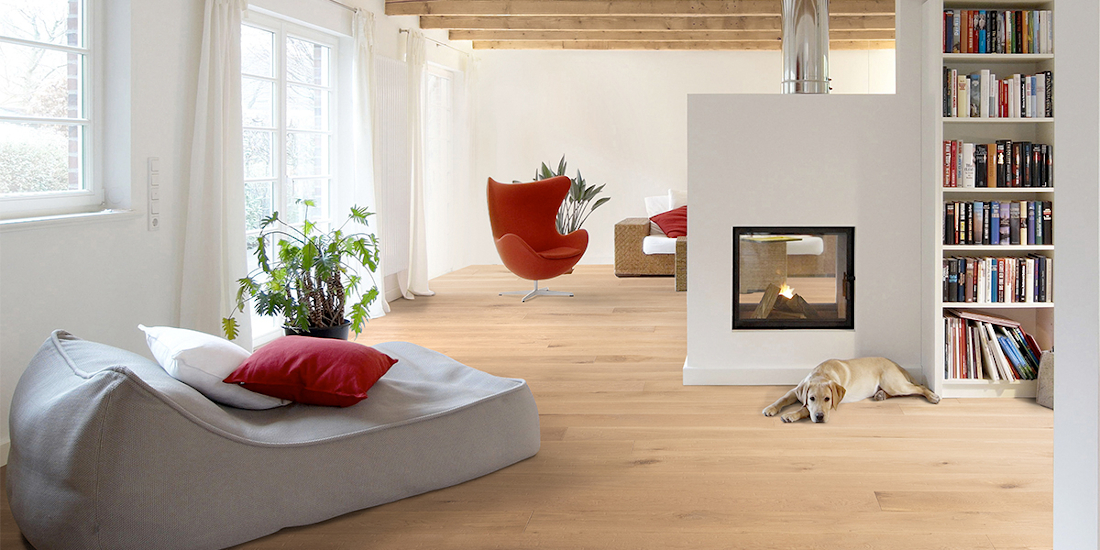
Handmade white oak flooring verified by the Sustainable Forestry Initiative. Photo courtesy CRAFT Artisan Wood Flooring
Q: I want to replace my carpet with something sustainable and I love the look of hardwood. What should I look for to find environmentally friendly flooring?
A: Replacing worn-out carpet with sustainable flooring can be a great, renewable choice. You have a range of options, including wood, bamboo, and cork. If you’ve got your heart set on hardwood floors—or wall paneling or any other type of wood building product, for that matter—keep in mind that not all wood is good for the environment! How green it is depends on the source of the wood.
Since wood comes from trees, it has the potential to be an infinitely renewable resource. Wood takes very little energy to make—because the sun does most of the work—compared to other common building materials such as concrete. Furthermore, wood products can help slow the effects of climate change due to their ability to reduce the amount of heat-trapping carbon dioxide in the air. They have the unique property of being a “carbon sink,” meaning that for the lifetime of the wood product, carbon is tied up in the structure of the material, removing it from the atmosphere for a time.
With this in mind, the key to finding the most sustainably produced wood is making yourself aware of the source of the wood. Poor forest management and deforestation are responsible for as much as 18% of the planet’s greenhouse gas emissions. Thankfully, over the years, forest management in North America has greatly improved, and our forests are now considered to be the best managed in the world. This means that wood products with a North American origin are generally thought to be safe, although not all sources—even in North America—are totally sustainable. Additionally, many wood products sold in the U.S. market come from overseas, where many forests are poorly managed.
Which leads us to what an environmentally conscious consumer should know to make sure that the wood products they buy come from a sustainable source. There are now third-party organizations whose purpose is to certify forests that are sustainably managed, and to also certify the products that are made from these eco-friendly sources.
These organizations look for some key forest management traits, such as:
- Replacing every tree cut down with two or more saplings
- Protecting stands of old growth, which have special conservation value
- Giving special attention to preserving water quality in streams and rivers
As it turns out, when forests are managed properly, they can continue on in perpetuity, undiminished in their vital role as the planet’s most important force against greenhouse gas emissions.
The main certifications American consumers are likely to encounter are the Forest Stewardship Council (FSC), Sustainable Forestry Initiative (SFI) and Programme for the Endorsement of Forest Certification (PEFC). Eco-conscious individuals should keep their eyes open for wood products certified by one of these organizations, and then vote with their wallets. If you have a hard time finding certified wood products, voice your concerns to suppliers about your environmental values, which will in turn send signals up the supply chain that consumers care about the ecological impacts of the products they buy.
So now when we ask the question, “Just because it’s made from wood, does that mean it’s good?” we know that the answer is “yes, as long as the wood comes from a proven sustainable source.”
Rod Gray is the president and chief sustainability officer for CRAFT Artisan Wood Floors, a member of the Master Builders Association of King and Snohomish Counties (MBAKS). If you have a home improvement, remodeling, or residential homebuilding question you’d like answered by one of MBAKS’ more than 2,600 members, write to homework@mbaks.com.